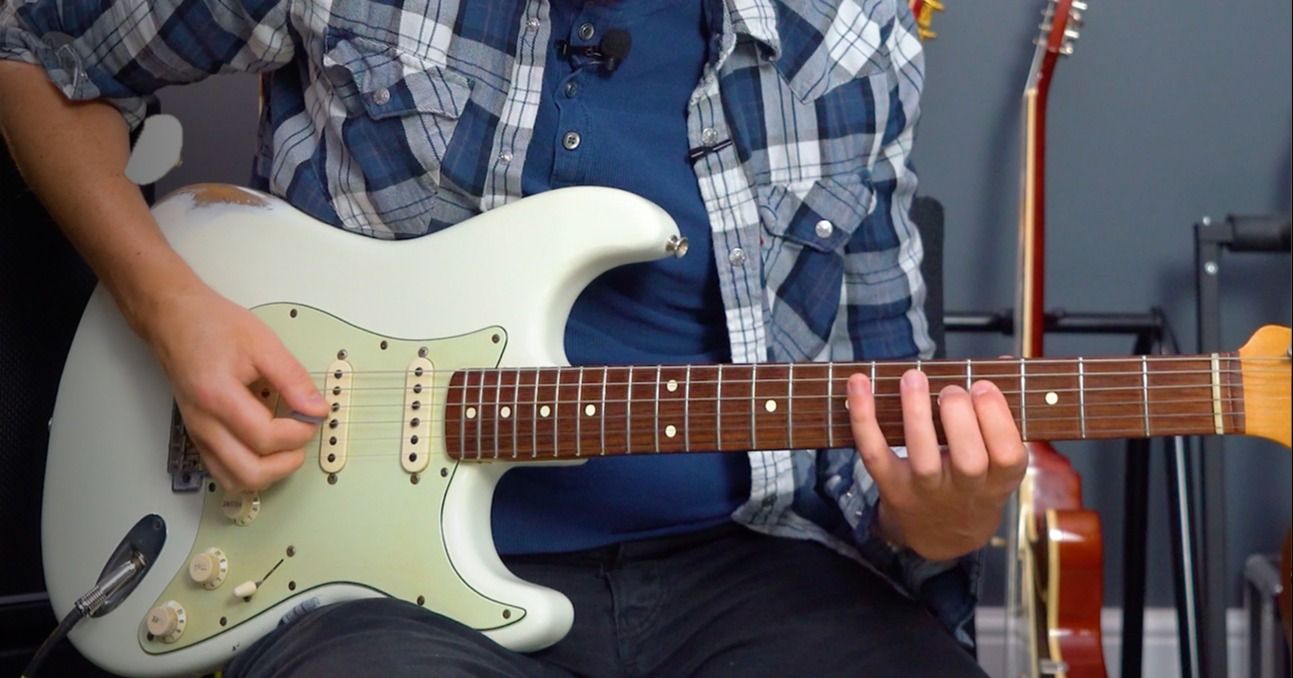How to Use Delay and Song 9
Course: 10 Day Lead Guitar Bootcamp

In this video
Welcome to day 9 of this free 10 day lead guitar challenge!
In this lesson, we'll look at how to get the most from using a delay pedal and some common delay settings you should know.
Delay is a time based effect, which repeats back everything you play. You can expand your notes far beyond the first note, with many repeats or, have very short repeats that creates a small and tight sound. Examples of types of delay are detailed at the bottom of the page!
One crucial element of delay is timing. What we want our lead part to sound like with delay applied, will be dictated by the timing of our picking and the delay tempo. Once you start using the effect, you can hear and feel how fast or slow to play in order for the delay repeats to fall at the desired moment.
Slap-back Delay settings
Characterised by a short, rapid echo with a very short tail, this sound was popularised by the 50s Rockabilly sound and also the Surf Guitar sound of the 60s.
U2 style Delay settings
A huge part of the sound of U2 is the signature sound of the bands guitarist The Edge. See more U2 songs that feature these delay settings here.
These settings are also used to play the songs 'Shut Up And Dance With Me' and also 'Sweet Disposition', which is the main song that we look at in this lesson video.
Lead part
Once we have our delay dialled in by 'tapping' the right tempo, we can take a look at the notes in a riff.
Fretboard diagram 1. shows the numbered intervals, with open string 4 numbered 1.
Fretboard diagram 2. shows just the fret numbers.
1.
2.
The first part of this lead line is relatively simple to get under our fingers but the tempo is where it can be trickier.
We need to play at a good pace for the delay to work its magic but it is still best to build up to that pace before diving straight into it!
Start off slower by tapping in a tempo that works for you
Or, just to get the notes under our fingers we can just practice without the delay until we are ready
Try to increase the tempo as the notes become easier to play and there is a good even space between them
The two diagrams below show the 1st and 2nd sections of the riff. They are numbered according to the intervals of the major scale.
We can call the open string the 1st degree of the major scale and then the 2nd, major 3rd, perfect 4th and perfect 5th interval as we play them.


Recap
We looked at tapping in delay settings, with the 'marimba' rhythm for U2 style delay
The way delay works and the capabilities
Interval theory and how we name and number the notes of lead parts relating to the major scale
Course Outline
10 Day Lead Guitar Bootcamp
